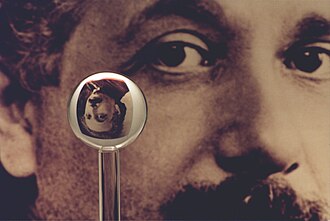
Back Кварцово стъкло Bulgarian Quars fos Catalan Křemenné sklo Czech Kvartsglas Danish Quarzglas German شیشه سیلیسی Persian Verre de quartz French Քվարցապակի Armenian 石英ガラス Japanese 석영유리 Korean

Fused quartz, fused silica or quartz glass is a glass consisting of almost pure silica (silicon dioxide, SiO2) in amorphous (non-crystalline) form. This differs from all other commercial glasses, such as soda-lime glass, lead glass, or borosilicate glass, in which other ingredients are added which change the glasses' optical and physical properties, such as lowering the melt temperature, the spectral transmission range, or the mechanical strength. Fused quartz, therefore, has high working and melting temperatures, making it difficult to form and less desirable for most common applications, but is much stronger, more chemically resistant, and exhibits lower thermal expansion, making it more suitable for many specialized uses such as lighting and scientific applications.
The terms fused quartz and fused silica are used interchangeably but can refer to different manufacturing techniques, resulting in different trace impurities. However fused quartz, being in the glassy state, has quite different physical properties compared to crystalline quartz despite being made of the same substance.[2] Due to its physical properties it finds specialty uses in semiconductor fabrication and laboratory equipment, for instance.
Compared to other common glasses, the optical transmission of pure silica extends well into the ultraviolet and infrared wavelengths, so is used to make lenses and other optics for these wavelengths. Depending on manufacturing processes, impurities will restrict the optical transmission, resulting in commercial grades of fused quartz optimized for use in the infrared, or in the ultraviolet. The low coefficient of thermal expansion of fused quartz makes it a useful material for precision mirror substrates or optical flats.[3]
- ^ Hardwood, W. (20 April 2004). "Spacecraft launched to test Albert Einstein's theories". Spaceflight Now. Retrieved 14 May 2009.
- ^ "Quartz vs. Fused Silica: What's the Difference?". Swift Glass. 2015-09-08. Retrieved 2017-08-18.
- ^ De Jong, Bernard H. W. S.; Beerkens, Ruud G. C.; Van Nijnatten, Peter A. (2000). "Glass". Ullmann's Encyclopedia of Industrial Chemistry. doi:10.1002/14356007.a12_365. ISBN 3-527-30673-0.
© MMXXIII Rich X Search. We shall prevail. All rights reserved. Rich X Search